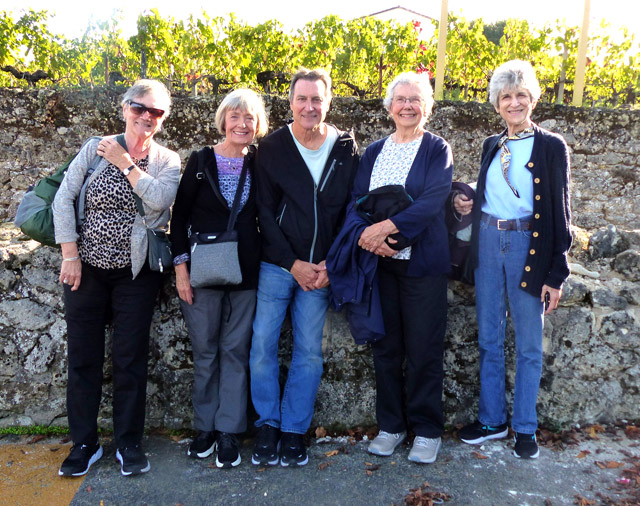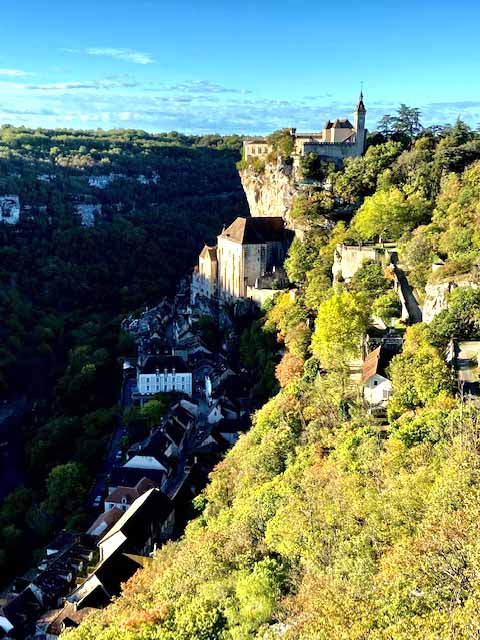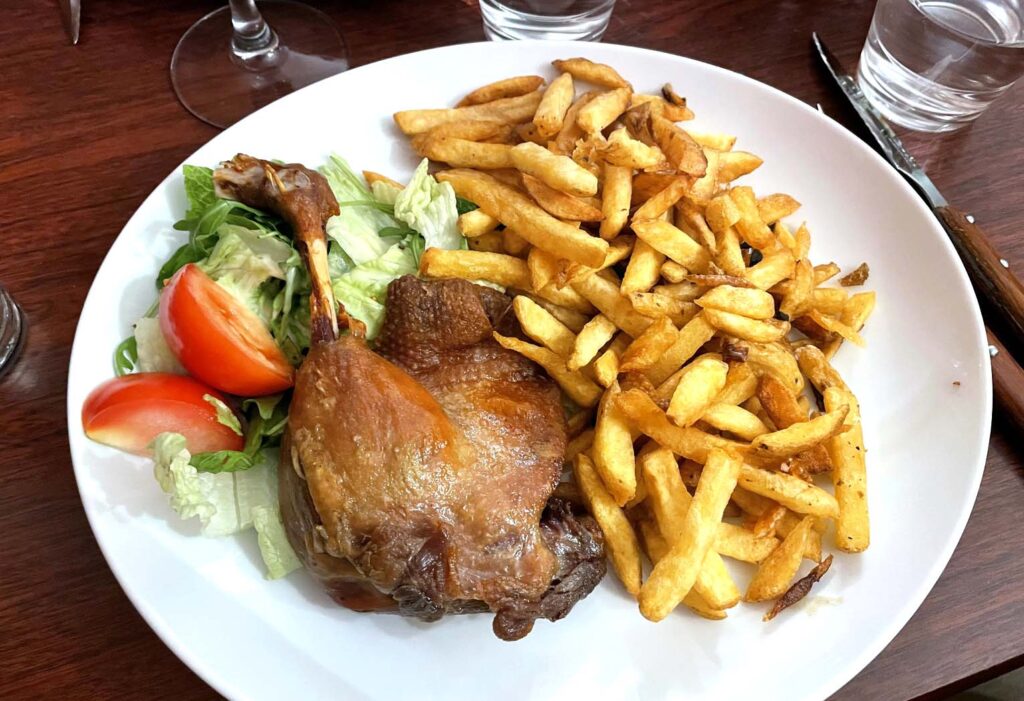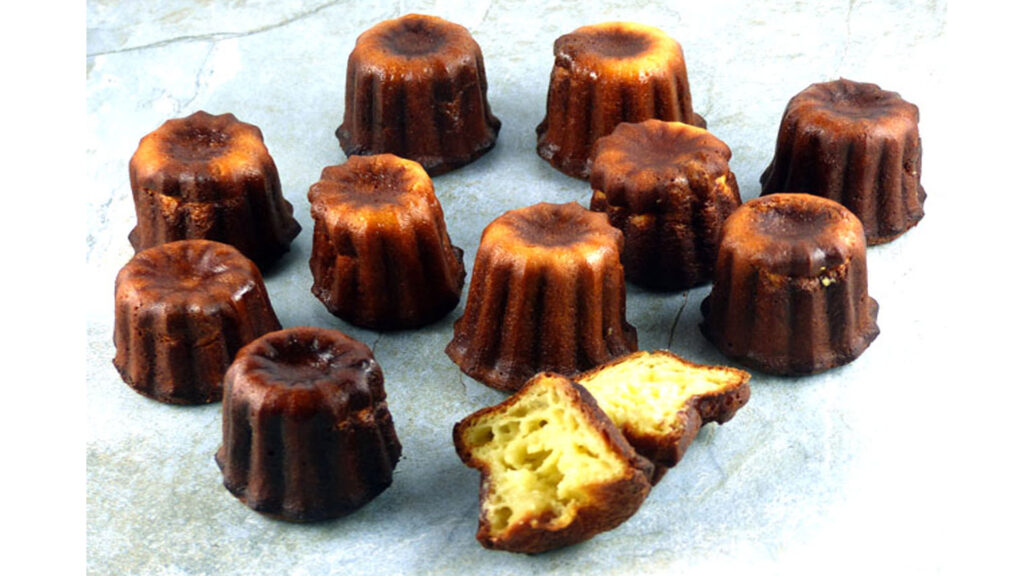In October 2022 several Vermonters participated in a Road Scholar trip to Southwest France, beginning in Bordeaux and finishing in Toulouse. They sampled wines in vineyards, savored traditional cuisine, marveled at prehistoric cave paintings, and wandered through medieval villages. For our May 10 Pause Midi, three of the travelers shared photos from the trip as well as their impressions.
Bill Pence (who currently serves as AFLCR treasurer) talked about two of the villages they visited. Sarlat, he explained, is a small medieval town in the Périgord Noir region. It has a large Benedictine abbey, dating to the 11th century. It was one of the few towns in the region not to be attacked by Vikings. It is well preserved, especially representative of 14th-century France. In the early 1960s, the culture minister André Malraux set out to protect French heritage, and with his efforts, the town’s historical district has been restored.
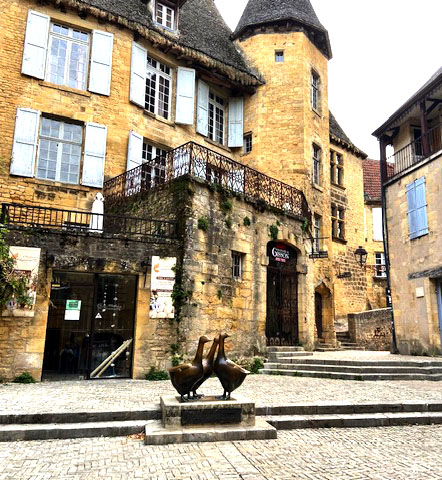
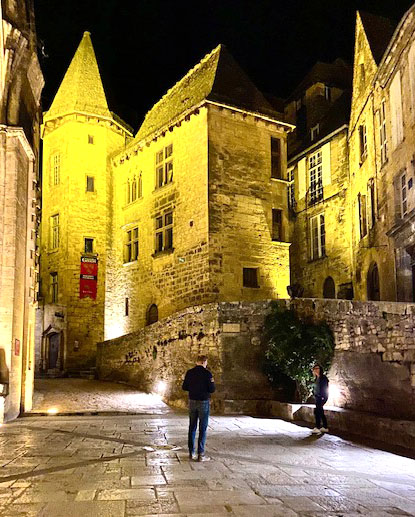
The town of Rocamadour is situated dramatically above a gorge. The town was built in three levels, Bill noted, rising up the face of a cliff. Residence was organized by social status: knights lived at the top, the middle level was for the clergy, and the lowest level was for lay working people. (The levels correspond to the Three Estates of France, upended by the French Revolution.) Flights of stairs lead up the medieval chapels in the middle level, totaling 216 steps. Home to a noted statue of the Blessed Virgin Mary, it long attracted pilgrims from many countries. Today’s visitors, Bill explained, are more likely to be tourists, and they come in great numbers: although Rocamadour has only 600 year-round residents, it receives 1 million visitors annually.
Jean Lurçat (1892-1966) was a noted tapestry artist who had his workshop and residence in Saint-Laurent-les-Tours. Mel Bourgault explained to us that his hilltop chateau is today a museum dedicated to his work., which the group visited.
Tapestry flourished as an art form in Middle Ages.. But the Renaissance brought a demand for tapestry to imitate paintings like those of Raphael. Traditional techniques gave way to methods that could simulate painting. In the centuries that followed, tapestry remained subservient to painting.
In the 20th century, Jean Lurçat helped bring tapestry out from under the shadow of painting. He revived the lost medieval techniques and in so doing moved the artform toward greater autonomy and integrity. So impressive were his works that he inspired Picasso and other painters to design tapestries.
During World War II, Lurcat created tapestries depicting the Gallic Rooster, the symbol of France. The Nazis deemed them dangerous. At the end of the war, he depicted a sun rising over Paris, with the legend “Bonjour de bon coeur … le soleil va se lever sur Paris.”
.
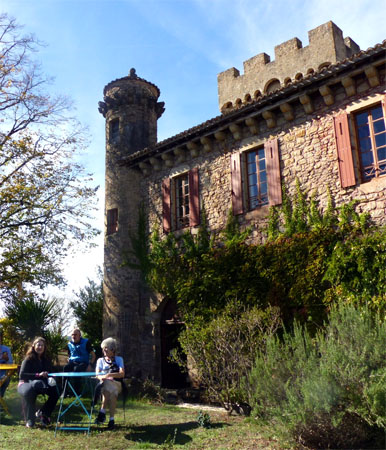

Finally, Patsy Jamieson (a member of the AFLCR board) discussed the distinctive cuisine of Southwest France. She noted that the food writer Waverly Root, in his book The Food of France (1958), observed that French cuisine can be categorized by the primary fat that a region uses in cooking. Whereas northern France bases its cuisine on the use of butter, and Provence on oil, the Southwest uses fat, especially fat from ducks and geese.
In the Southwest, every part of the duck is used, from the breast to the liver to the gizzards. But Duck Confit is as common on restaurant menus there as hamburgers are in the United States. Traditionally, duck was salted with herbs, set overnight, then cleaned and submerged in duck fat, where it simmered gently for a long time, to create Duck Confit. In the days before refrigeration, the technique allowed duck to be preserved for extended periods of time. Patsy is currently exploring more contemporary methods of preparation that emphasize taste rather than preservation.
Geese, for their part, are fattened and force-fed specifically to enlarge their livers to make foie gras—a “controversial” practice, as Patsy noted.
Southwest France is also known for its truffles, a luxury product. A truffle is a type of mushroom prized around the world for the flavor it imparts to other dishes, especially sauces.
This region, especially the medieval fortress town of Carcassone, is known for originating the classic dish cassoulet. It’s a stew made from white beans, duck, sausage, cured pork, fresh lamb. These meats are cooked with onions, garlic, bay leaf, and little tomato, topped with a crust of breadcrumbs.
Patsy is a longtime fan of canelés, a pastry originating in the Southwest with a crispy caramelized exterior and a custardy interior, flavored with vanilla and rum. She has developed a recipe in her own kitchen, which she has shared with us elsewhere.
Gateau à la broche (spit cake) is cake “cooked on a spit.” You pour the batter over a spit over a fire; as it’s turned, it builds up layers.
The markets in the Southwest, Patsy said, are a feast for the eyes, featuring coquilles Saint-Jacques in their shells, and artfully displayed fish.
You can view the video of this presentation here.
Our Pause Midi series will go on a break for the summer and resume in September.
